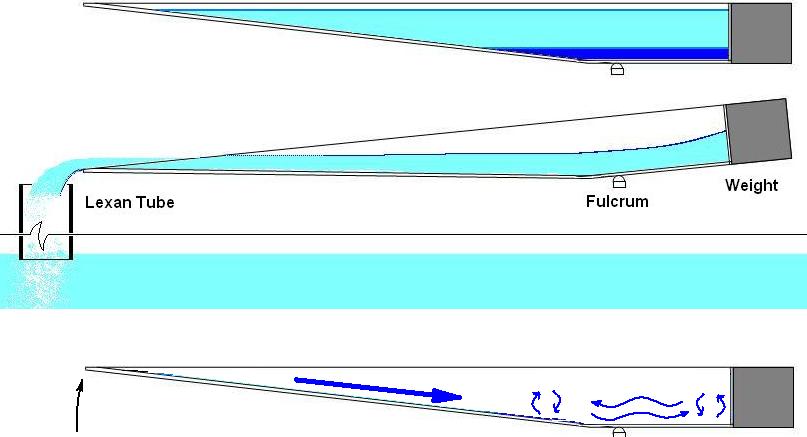herring_fish
Crazy Designer
I use a true dump bucket Algal Turf Scrubber (ATS). I have been using it since the early 90's and I like it. It works for me but it's not for everyone. I know that and I don't want to weigh the relative merits of an ATS compared to a skimmer here. We do that (ad nauseam) on other threads. I will however, talk about one of its benefits on my way to my questions.
As most of you know, algae in a properly designed ATS takes up nutrients. To over simplify it, the ATS does this as and after the food rots in the tank but the nutrients do stay at zero and that is what's important. This offers the possibility of leaving food suspended in the water column much longer.
This is great for liquid and powdered food but live food is killed by the same impellers that are in skimmers and that are used to get good water flow in the tank.
I was given a non-traumatic pump that is patented but never went into production. It basically works like a bubble lifter but it uses pillows of air that are the size of inches instead of millimeters.
I think that I can feed the dump bucket the 4 to 6 gallons of water it uses per minute, depending how I want to set it. When I first built it, I set it right on top of the tank but I felt that the splash was anemic. When I built my new tank, I lifted it one foot purely for cosmetic reasons.
This is a video when I was first setting it back up.
http://www.youtube.com/watch?v=mRoKX8AjEbI
Now I am wondering, if I took out what I use for water flow in the tank and used the non-traumatic pump to feed the ATS I could let live food survive and stay suspended in the tank until it was consumed by the inhabitants in the tank. Of course this would include some settling to the bottom.

Now it's time to talk about relative merit. If I pumped a lot of live food, along with everything else that I put in, would things do well? Would lots of food make up for less water flow?
The dump bucket would provide only, say 6 gallons per minute. While there is lots of local turbulence (2 gallons per dump), under the bucket, the flow from that end to the over flow at the other end would not be much.
The ATS can handle a very high amount of feeding and live food has a little bit of motility to stubble into the feeders but would that amount of flow be enough to provide a healthy environment?
As most of you know, algae in a properly designed ATS takes up nutrients. To over simplify it, the ATS does this as and after the food rots in the tank but the nutrients do stay at zero and that is what's important. This offers the possibility of leaving food suspended in the water column much longer.
This is great for liquid and powdered food but live food is killed by the same impellers that are in skimmers and that are used to get good water flow in the tank.
I was given a non-traumatic pump that is patented but never went into production. It basically works like a bubble lifter but it uses pillows of air that are the size of inches instead of millimeters.
I think that I can feed the dump bucket the 4 to 6 gallons of water it uses per minute, depending how I want to set it. When I first built it, I set it right on top of the tank but I felt that the splash was anemic. When I built my new tank, I lifted it one foot purely for cosmetic reasons.
This is a video when I was first setting it back up.
http://www.youtube.com/watch?v=mRoKX8AjEbI
Now I am wondering, if I took out what I use for water flow in the tank and used the non-traumatic pump to feed the ATS I could let live food survive and stay suspended in the tank until it was consumed by the inhabitants in the tank. Of course this would include some settling to the bottom.
Now it's time to talk about relative merit. If I pumped a lot of live food, along with everything else that I put in, would things do well? Would lots of food make up for less water flow?
The dump bucket would provide only, say 6 gallons per minute. While there is lots of local turbulence (2 gallons per dump), under the bucket, the flow from that end to the over flow at the other end would not be much.
The ATS can handle a very high amount of feeding and live food has a little bit of motility to stubble into the feeders but would that amount of flow be enough to provide a healthy environment?
